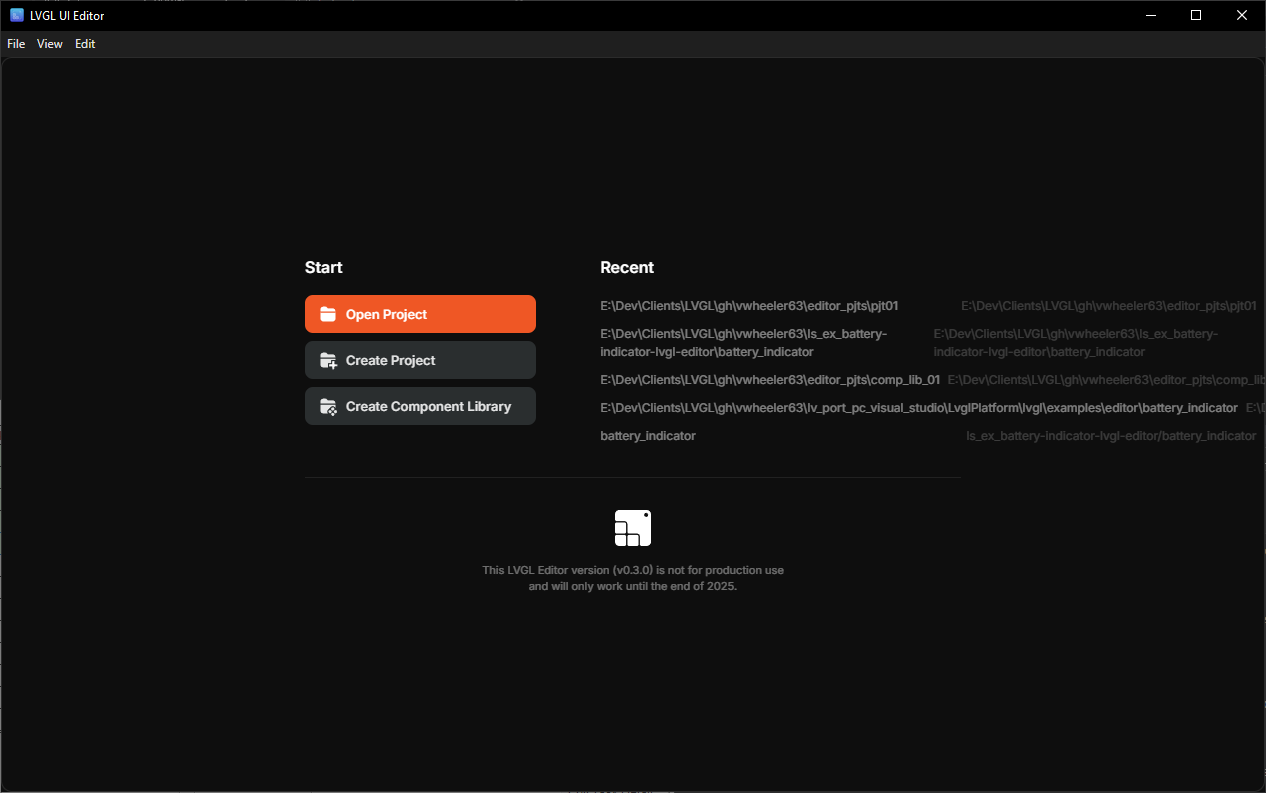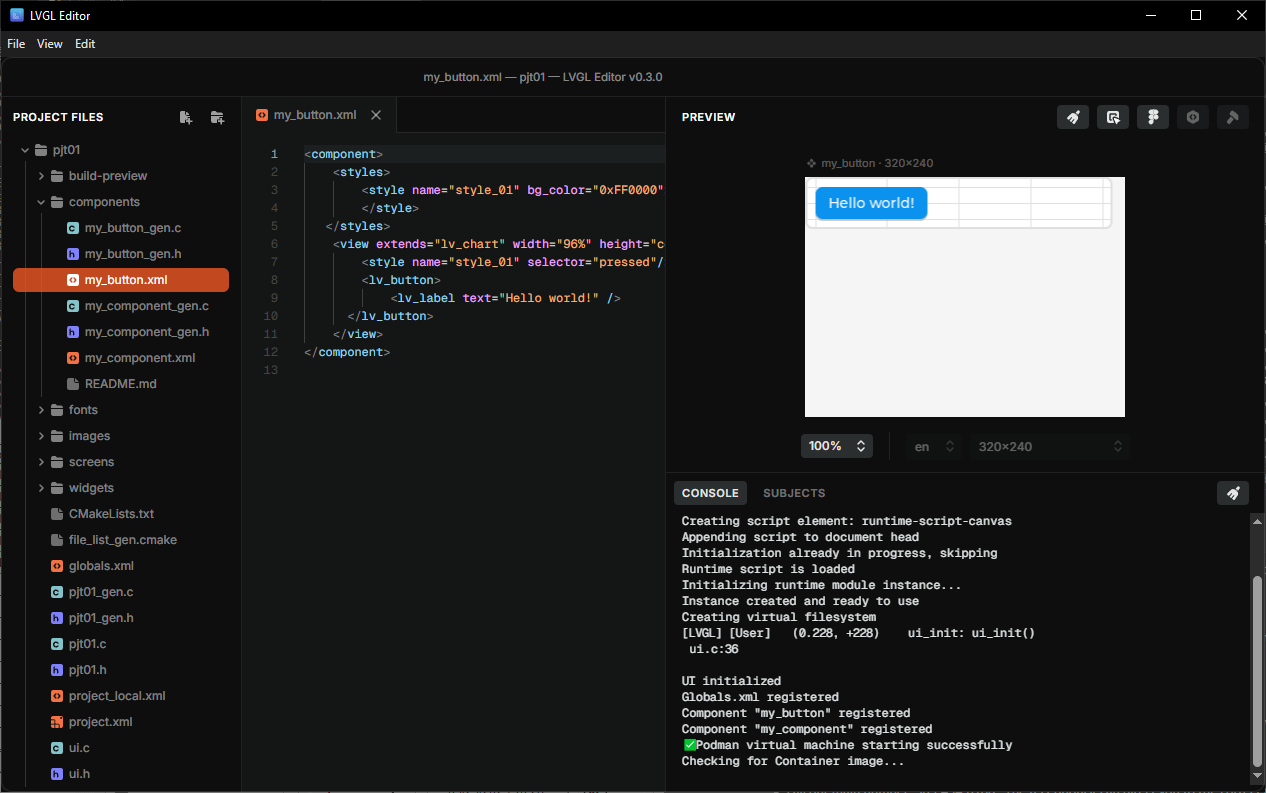User Interface¶
First Run¶
The first time you launch LVGL Pro, it will pop up a window with the message
"Pulling Container image for LVGL, this may take a few minutes...".
This message means the Editor is downloading a pre-configured container image that includes all the necessary tools and dependencies for building LVGL projects. LVGL Pro handles (and updates) the container automatically in the background. The process can take a few minutes the first time, depending on your internet speed, but it only happens once. After that, the container is reused for future sessions.
When a new version of the container is published (e.g. with updated toolchains, build logic, etc.), the Editor automatically checks for and pulls the latest version. You won’t need to do anything manually, it stays up-to-date in the background.
Login¶
enter your email address
you will receive an email with an OTP (One-Time Password)
it will create a user for you (no password is needed)
Licence Selection¶
After logging in you need select a licence for the list.
Launch Screen¶

LVGL Pro Opening User Interface
The Launch Screen opens up every time you start the Editor and are already logged in.
Here you can:
Open an existing project
Create a new project
Open any recent project
Working on a Project¶

LVGL Pro User Interface
Project Files Pane¶
The left panel is a typical "project-tree" navigation panel. It allows you to efficiently and conveniently create, open and rename files and manage your project.
The subdirectories shown in the project are for the respective type of UI components (i.e. Screens, Widgets, Components, Fonts and Images).
Editor Pane¶
The Editor Pane appears in the middle of the window. This is where you make LVGL Pro do valuable work for you, building your UI or Component Library. It is here that you can observe and edit the contents of any file in your project, but its specialty is editing XML that defines UI components (Widgets, Components and Screens). While editing XML, LVGL Pro has a powerful auto-completion-enabled user interface, which makes defining, editing and validating UI components a breeze. Similar to context-sensitive assistance available in other "smart editors", the Editor Pane assists you with almost every keystroke, considerably shortening the learning curve required to produce finished, professional-quality UIs with LVGL Pro.
Right Panel¶
Preview Pane and Inspector¶
When the Editor Pane is editing an XML file defining a Component or Widget, the Preview Pane shows a live preview of the XML UI definition being edited, pushed through real LVGL rendering so you can instantly see the results of your work, that will match the final result produced by firmware, accurate down to the pixel.
Simultaneously, it allows you to interact with that UI to see how it will look and feel at runtime.
How it Works:
LVGL has a built-in XML parser that can create UIs at runtime
the inspector uses LVGL as it is
the editor sends the XML files to LVGL
the editor asks LVGL to create an instance of the opened XML file
when the xml changes only the opened XML file is uploaded, the screen is cleared, and a new instance is created
the XML editor parses the XML files of the LVGL widgets and the user's XML files to validate the XMLs
code is also exported by parsing the XML files
Turn the Preview Pane into an Inspector by holding down the [Ctrl] key. The Inspector allows you to:
visualise bounding box, padding, margins and click area
check size and position by dragging
perform measurement
double click to jump to the XML file
single click to change editor focus to the matching XML element
Output Pane¶
The Output Pane contains a number of tabs where you can see various results, and manage certain lists as part of your project.
- Console Tab:
contains "log output" of the internal actions taken and their results.
- Subjects Tab:
contains list of the Observer-Pattern Subjects implemented in your XML source files. Each Subject represents a single "datum" in the application, that UI elements (Widgets and Components) can "observe" and reflect visually. See Data binding (Subjects) for more details.
- Test Tab:
TODO: Description of Test Tab
Tabs Coming Soon: Tests, Translations, Animations